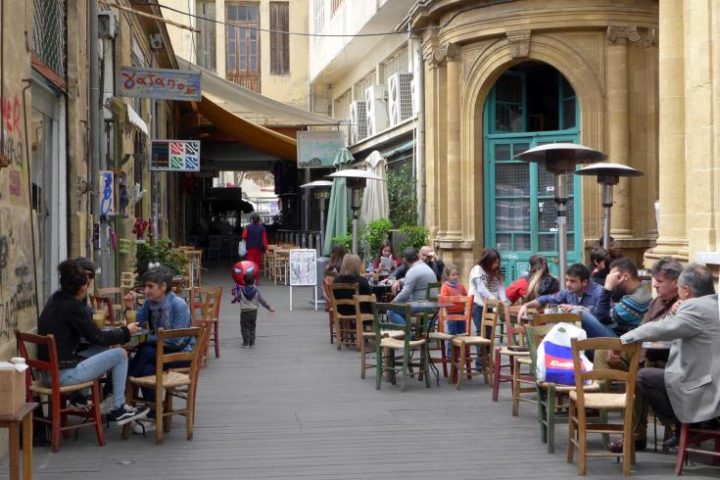 The prospect of finding crude oil on the island or off our coast has lured prospectors from as far back as the late 1930s, but the cost of exploration and the depth required to dig made this a prohibitive investment.
The prospect of finding crude oil on the island or off our coast has lured prospectors from as far back as the late 1930s, but the cost of exploration and the depth required to dig made this a prohibitive investment.
Just as the abandoned copper mines are now seen as lucrative opportunities, with the growing demand for IT and power cables, efficient technologies make digging for ‘black gold’ or natural gas seem more cost-effective than ever before.
The first attempts at exploration started in 1938 and lasted for a decade during British colonial rule, when the security of the Suez Canal and worldwide oil exports started becoming a major issue and far greater oilfields in Iraq, Persia and the Arabian peninsula gained popularity.
The first to start prospecting for crude oil was the Iraq Petroleum Company Ltd. which had created 12 companies with concessions or exploration licences in the region, one of which was the subsidiary Petroleum Development (Cyprus) Ltd.
The Iraq Petroleum Co., until 1929 called Turkish Petroleum Company, was jointly owned by some of the world's largest oil companies which had virtual monopoly on all oil exploration and production in Iraq from 1925 to 1961 and played a major role in the discovery and development of oil resources in the Middle East. The main shareholders were Royal Dutch Shell, Anglo Persian (now BP), Compagnie Francaise des Petroles (now Total) and the Near East Development Company (ExxonMobil).
One of the shareholders was tycoon Calouste Gulbenkian with a 5% stake, which eventually earned him the nickname “Mr Five Percent”.
Then came Oil Prospectors Ltd which continued to explore from 1949 to 1957 and had reached a depth of 1,799 metres south of Moni and 1,250 metres near Tseri. In 1957, this company handed over its exploration activities to Forest Oil Corporation that explored in two fields up until 1970 and had reached a depth of 2,586 and 3,295 metres, respectively, near Archangelos, near the Apoel training field and near Lefkoniko.
Delta Exploration Inc was the first to explore offshore and from 1970 to the Turkish invasion in 1974 had conducted seismic surveys off the island’s coast to a depth of 200 metres. In 1975, Sefel Geophysical started conducting seismic searches in a wide area that spanned 8,000 sq.km. in the eastern Mediterranean. Then all exploration work stopped for a decade and the resumed when the Soviet Academy of Sciences started conducting its own two dimensional (2D) and three-dimension (3D) searches south of Cyprus, identifying the tectonic plates, rock formations and other geophysical data.
In the past, there had also been hopes to identify some hydrocarbon deposits near Pentadaktylos or the Troodos mountain range, but exploration attempts had failed or had not produced any result.
INTERNATIONAL AGREEMENTS
The Republic of Cyprus first started work to set out its Exclusive Economic Zone (EEZ) on February 17, 2003, during Glafcos Clerides’ administration, when the then Commerce Minister, Nicos Rolandis, signed the first agreement with Egypt. Another agreement with Egypt followed in 2006 and the first agreement was negotiated with Lebanon in 2007. The final EEZ agreement was signed with Israel in 2010.
The recent cycle of exploration work started during Tassos Papadopoulos’ administration with the French consultants Beicip-Franlab hired by the Cyprus government in October 2005. Two months later, Norway’s PGS Geophysical AS signed an agreement to conduct seismic surveys, offering to undertake all the costs of the research, but with the right to sell the data directly to potential exploration companies. PGS conducted its first 2D survey across an area of 6,770 sq.km. in March 2006, which was followed by the first licensing round on February 15, 2007. By August 16, three bidders had shown interest in three separate blocks.
NOBLE ARRIVES
On October 24, 2008, Houston, Texas-based Noble Energy International was granted the first license from among 12 blocks taking into consideration the company’s technical and financial capabilities, the proposed exploration plan, the potential revenues to be earned, the security and risk factors.
Just before the end of 2011, Noble announced a potential discovery of an average 3 trillion cubit feet (Tcf) of natural gas.
This was Noble’s fifth discover, as it was also involved in the exploration work within Israel’s Leviathan basin where it has partnered with Delek Energy of Israel that has an option on the Cyprus prospect, known as the “Aphrodite” block.
2ND ROUND
The government is expected to embark on a second licensing round in early February, having submitted the necessary documentation to Brussels fro official translation by the European Commission.
Government spokesman Stephanos Stephanou said that this will be a three-month process during which expressions of interest will be submitted by potential energy companies. After that, a team of experts will submit their recommendations to Commerce Minister Praxoulla Antoniadou who will conduct negotiations leading to final bids.
Meanwhile, the House of Representatives is expected to ratify on Thursday an amendment to the EEZ agreement with Egypt which will also clarify the undetermined area lying between the two national zones.
Despite the hostile situation between Lebanon and Israel, the Cyprus government said it is confident it will conclude a final EEZ agreement with Lebanon as well.
Photo: American Colony Photograhic Department archive — IPC workers are overseeing the welding of pipes in the 1930s.







